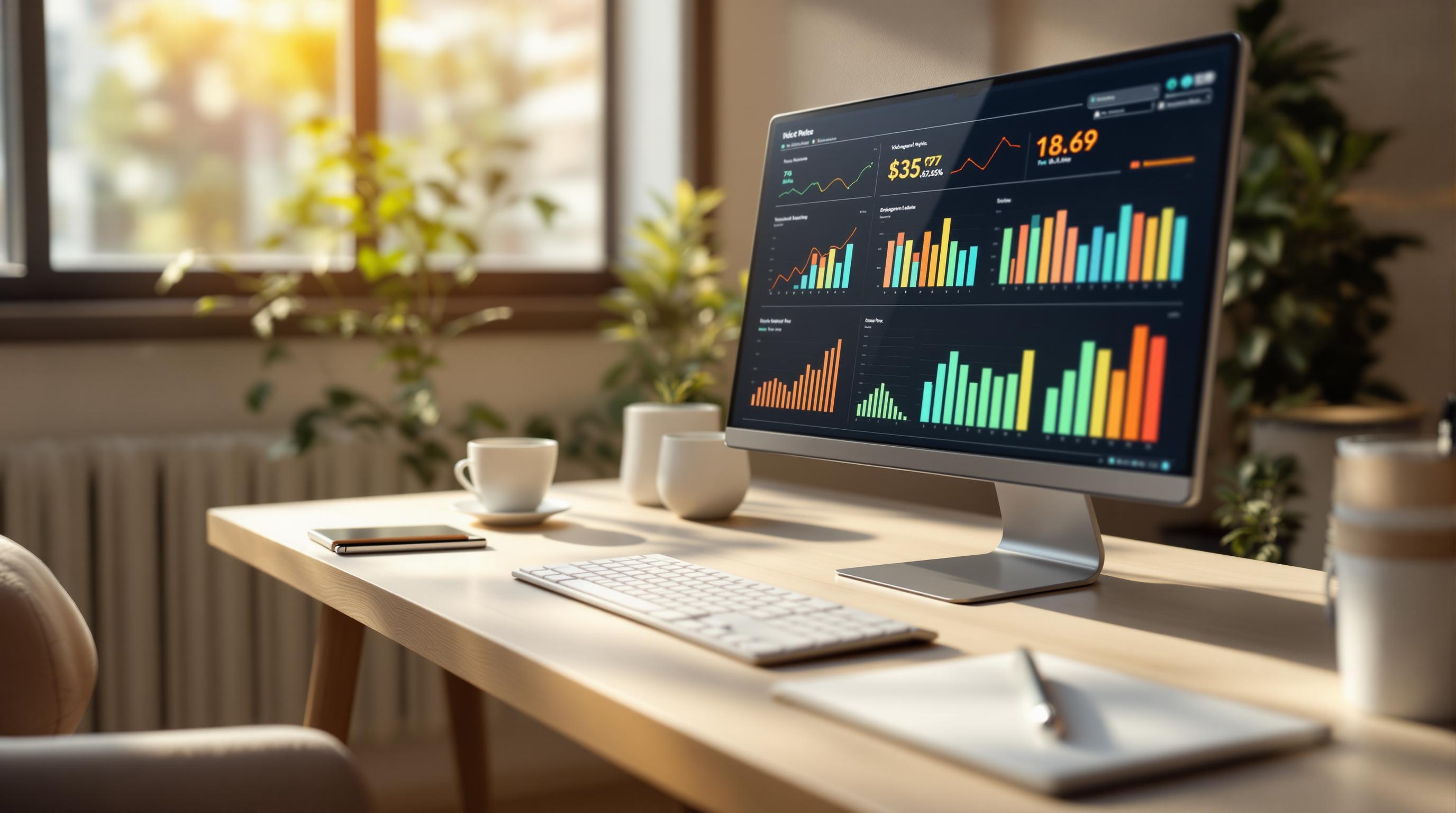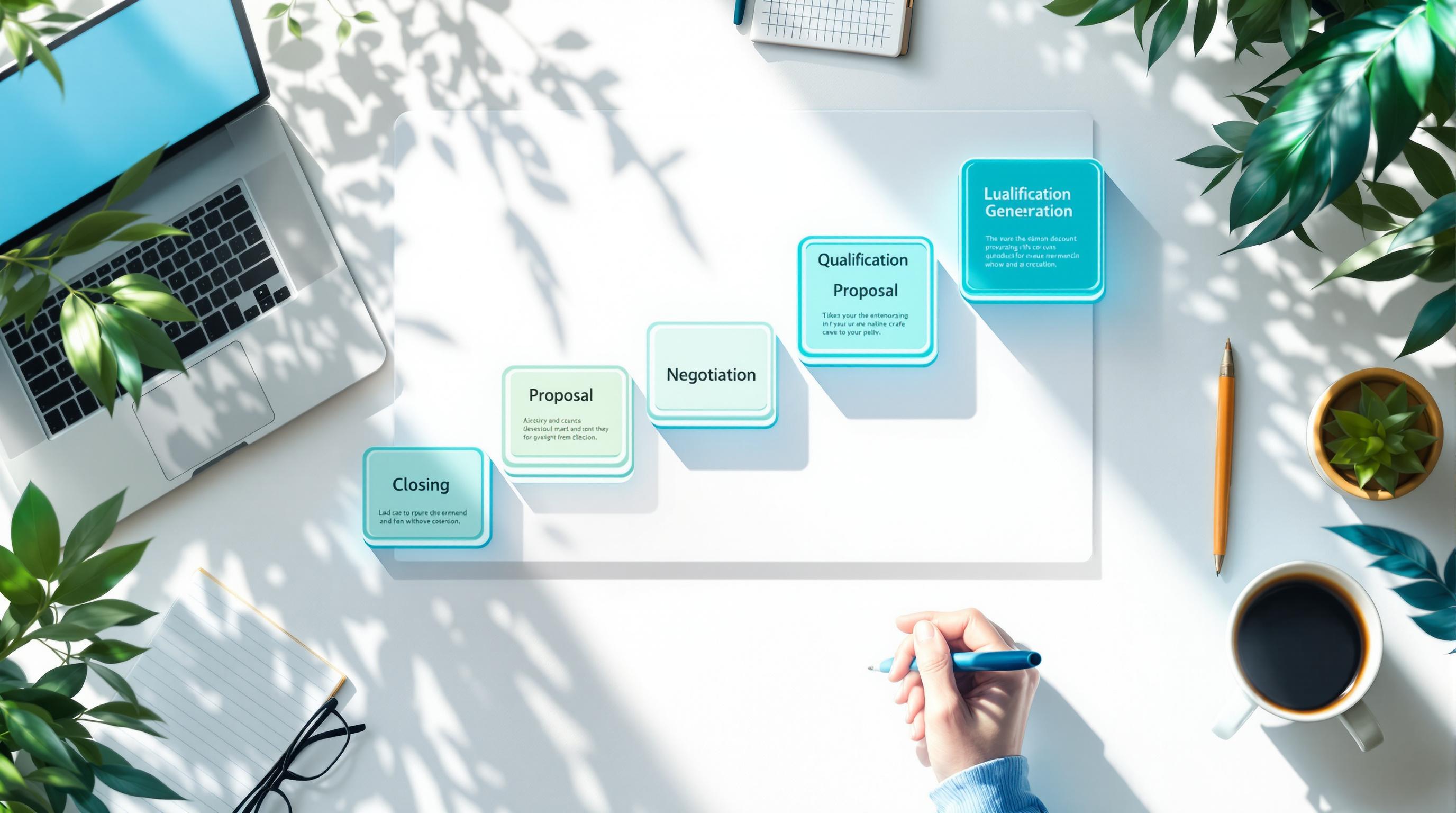Email bounce rates can harm your marketing efforts by preventing messages from reaching recipients, damaging your sender reputation, and reducing ROI. A healthy bounce rate should stay below 2%, with hard bounces ideally close to 0%. If your rate exceeds 5%, immediate action is required. Here's how to fix it:
- Build permission-based email lists: Avoid purchasing lists; focus on organic sign-ups.
- Use double opt-in: Confirm email accuracy during sign-up.
- Clean your list regularly: Remove bounced, inactive, or duplicate addresses.
- Implement email validation tools: Detect invalid or risky addresses before sending.
- Monitor sender reputation: Keep track of metrics like delivery rates and spam complaints.
- Target engaged subscribers: Focus campaigns on active users.
- Address repeated soft bounces: Remove addresses with ongoing issues.
- Avoid spam triggers: Use clear subject lines and balanced content.
- Track delivery metrics: Use feedback loops to refine your strategy.
Here's How to Drop your Email Bounce Rate to less than 1% (PT 1)
What Is Email Bounce Rate
Email bounce rate measures the percentage of emails that fail to reach recipients' inboxes. As Segment puts it:
"Email bounce rate refers to the percentage of emails that never make it to a recipient's inbox (that is, they've 'bounced back' to the sender)."
To calculate it, use this formula: (bounced emails ÷ total emails sent) × 100. For instance, if 15 emails bounce out of 1,000 sent, your bounce rate is 1.5%. These bounces usually happen because of invalid email addresses or emails flagged as spam.
Keeping your bounce rate low is crucial - it boosts email deliverability and improves your return on investment (ROI). Even small improvements can add up, especially when every dollar spent on email marketing yields an average return of $42. Studies show that typical bounce rates range between 0.63% and 0.7%, serving as a benchmark for performance.
Hard vs. Soft Bounces
Understanding the difference between hard and soft bounces is essential to managing and improving your email campaigns. Each type requires its own solution.
Hard bounces are permanent failures, meaning the email will never be delivered. Common reasons include invalid email addresses, non-existent domains, or blocked domains. When a hard bounce occurs, you should immediately remove the email address from your list to protect your sender reputation.
Soft bounces, on the other hand, are temporary issues. These might happen if a recipient's inbox is full or their email server is temporarily down. Unlike hard bounces, soft bounces may resolve on their own. Email servers often retry sending messages that result in soft bounces, but they won’t do so for hard bounces.
Different email providers handle soft bounces in unique ways. For example, Mailchimp allows an email address up to seven soft bounces without user activity - or 15 soft bounces for active contacts - before it converts the issue into a hard bounce.
| Bounce Type | Cause | Resolution | Server Retry | Impact |
|---|---|---|---|---|
| Soft Bounce | Full mailbox, server issues | Often resolves itself; may need adjustments | Server may retry | Minimal if resolved quickly |
| Hard Bounce | Invalid address, non-existent domain | Remove address from list immediately | No retries | Can harm sender reputation significantly |
What Happens When Bounce Rates Are High
A high bounce rate can seriously derail your email marketing efforts. Email deliverability expert Iva Nakova explains:
"High bounce rates negatively impact the sender reputation, leading to deliverability problems."
When your bounce rate is consistently high, email service providers may assume your list is filled with outdated or invalid addresses. This can lower your sender reputation - a score that determines whether your emails land in the inbox, promotions tab, spam folder, or get blocked entirely. Once your sender reputation takes a hit, rebuilding it becomes a long and difficult task.
Bounce rates above 2% often signal problems with your email list, targeting, or setup. If your rate exceeds 5%, it’s a clear sign you need to take action immediately. High rates are often tied to poor list maintenance or outdated data, which creates a cycle where fewer engaged subscribers see your emails, further dragging down deliverability.
The financial impact is also worth noting - sending emails to invalid addresses means you’re wasting money on messages that will never be opened, cutting into your overall ROI.
Next, we’ll dive into nine actionable strategies to help you lower your email bounce rate.
9 Ways to Reduce Email Bounce Rate
High bounce rates can hurt your email marketing efforts, but the good news is there are proven ways to keep your emails reaching inboxes instead of bouncing back. Let’s dive into nine practical strategies.
Build Lists with Real, Consented Subscribers
A low bounce rate starts with a high-quality email list. Avoid buying email lists from third-party vendors - these lists often contain outdated or fake addresses and can harm your sender reputation. Instead, focus on building your list organically through permission-based marketing. This means subscribers willingly opt in to receive your emails, ensuring you're reaching people who genuinely want to hear from you.
Offer incentives like free shipping, exclusive discounts, or downloadable content to encourage sign-ups. When people voluntarily sign up, they’re more likely to provide accurate email addresses. Regularly refreshing your list helps maintain its quality and keeps invalid addresses from dragging down your campaigns.
Use Double Opt-In Processes
Adding a double opt-in step to your sign-up process can significantly cut down on bounce rates. After someone signs up, they receive a confirmation email asking them to click a link to finalize their subscription. This extra step helps catch typos, fake emails, and uninterested users.
While single opt-in might seem simpler, double opt-in ensures your list is filled with valid, engaged subscribers. Many email platforms make this process easy to set up, and though it may slightly reduce the initial number of sign-ups, it pays off with better deliverability and engagement over time.
Clean Your Email List Regularly
Keeping your email list clean is an ongoing task, not a one-time effort. Regularly removing inactive, bounced, or unengaged addresses helps maintain strong deliverability rates. Experts recommend aiming for a bounce rate below 0.5%.
Set a cleaning schedule based on your list size. For most businesses, every six months works well, but larger lists (100,000+ subscribers) may need more frequent attention. Focus on removing hard bounces immediately, monitoring soft bounces over 1–3 months, and eliminating duplicate entries.
Before cutting inactive subscribers, try re-engagement campaigns. Send special offers or ask them to update their preferences. This gives interested subscribers a chance to stay while helping you identify those who should be removed.
"Maintaining a clean email list, free of incorrect addresses and lapsed subscribers, is an essential part of successful email marketing." - OptinMonster
Use Email Validation Tools
Email validation tools can help identify problematic addresses before they cause bounces. These tools check for invalid emails, spam traps, and risky domains that could hurt your sender reputation.
Look for tools with high accuracy (95% or more) and bulk upload features. Many offer free trials, so you can test their effectiveness before committing. Choose a tool that integrates easily with your email platform to streamline the process.
Monitor and Improve Sender Reputation
Your sender reputation is like a trust score for your emails - it influences whether internet service providers (ISPs) deliver your messages to inboxes. High bounce rates can damage this reputation, reducing deliverability.
Keep an eye on your reputation using tools from ISPs or third-party services. Watch for changes in delivery rates, spam complaints, or bounce patterns that could signal trouble. Consistent sending habits, avoiding spam triggers, and maintaining high engagement can all help protect your reputation.
A strong sender reputation increases the likelihood that your emails will reach inboxes, creating a positive feedback loop for better bounce rate management.
Target Engaged Subscribers Only
Focus your campaigns on subscribers who actively engage with your emails. Segment your list based on recent activity, such as opens, clicks, purchases, or site visits. Prioritize these active subscribers to keep your engagement metrics high and avoid bounces from inactive addresses.
Set up automated workflows to move subscribers between engagement tiers. For example, active subscribers get regular emails, while inactive ones receive re-engagement campaigns. If they remain unresponsive, consider removing them from your list.
Remove Repeated Soft Bounces
Soft bounces are temporary, but repeated soft bounces often signal ongoing issues. Monitor addresses that consistently fail over multiple campaigns and remove them if the problem persists.
"Keep an eye on email addresses that consistently bounce. High bounce rates can harm your sender reputation, so it's crucial to manage and update your list accordingly." - Natalie Sullivan, former retention marketing manager at Avex Designs
Addresses with 3–5 soft bounces within a few months likely have unresolved issues, such as full mailboxes or server problems. Removing them helps prevent further delivery issues.
Avoid Spam Triggers in Your Content
Your email content plays a big role in whether it gets delivered or flagged as spam. Avoid misleading subject lines, excessive promotional language, or problematic formatting. Words like "FREE", "URGENT", or "ACT NOW" in all caps can trigger spam filters.
Stick to honest, relevant subject lines and maintain a balanced text-to-image ratio. Always include a clear unsubscribe link and use a "from" address that matches your domain. Testing your emails with spam checkers before sending can help identify and fix potential issues.
Track Delivery Metrics and Feedback Loops
Set up feedback loops with major ISPs to get alerts when recipients mark your emails as spam. This data can help you identify problematic addresses and content issues before they escalate.
Besides bounce rates, monitor other key metrics like delivery rates, spam complaints, and unsubscribe patterns. Most email platforms provide detailed analytics to help you pinpoint problem areas. Use these insights to refine your targeting and improve your content strategy.
The average email bounce rate across industries is between 2% and 5%, but by applying these strategies consistently, you can achieve much lower rates. Focus on implementing these steps systematically to maintain a clean, engaged email list and improve your email deliverability.
sbb-itb-a84ebc4
List Hygiene Methods Comparison
When deciding on the best way to maintain a clean email list, factors like budget, list size, and available resources play a big role. Each method comes with its own set of strengths and challenges, all of which impact bounce rates and deliverability. This comparison outlines key approaches to help you choose the right method for keeping your email list in top shape. A well-maintained list not only reduces bounces but also protects your sender reputation.
Manual cleaning is a good starting point for smaller businesses or those with limited resources. It involves reviewing engagement metrics, manually removing duplicates, and sending re-engagement campaigns to inactive subscribers. While this method is cost-free and offers full control, it can quickly become tedious and error-prone for larger lists.
Automated cleaning tools are software solutions that efficiently identify problematic email addresses. These tools can catch outdated emails, spam traps, catch-all addresses, and disposable domains - issues that are often missed during manual cleaning. With accuracy rates as high as 99.5% and the ability to process thousands of emails per minute, these tools are scalable and ideal for growing businesses.
Third-party validation services take list hygiene to the next level. They combine advanced detection techniques with expert support, identifying sophisticated threats like hidden spam traps and ensuring compliance with email regulations. This method is particularly useful for businesses in regulated industries or those managing large, complex lists.
Comparison Table
Here’s a quick breakdown of manual cleaning, automated tools, and third-party services to help you weigh your options:
| Method | Pros | Cons | Best For |
|---|---|---|---|
| Manual Cleaning | Free, full control | Time-intensive, error-prone for large lists, can’t detect spam traps or catch-all emails | Small lists (under 1,000 subscribers); businesses with tight budgets |
| Automated Tools | Fast (processes thousands per minute), accurate (up to 99.5%), scalable, real-time updates | Costs $8–$50 per 1,000 emails, limited customization, requires technical setup | Medium to large lists; businesses needing regular, efficient cleaning |
| Third-Party Services | Extremely accurate, detects advanced threats, expert support, ensures regulatory compliance | Most expensive, relies on external providers, less direct control | Large enterprises; regulated industries; businesses prioritizing maximum deliverability |
Studies show that only 57% of email addresses are valid. Companies that maintain clean lists can see open rates improve by as much as 50%. Regular cleaning can also boost deliverability by up to 25%, leading to 5–15% higher open rates.
For small to medium-sized businesses, automated tools often strike the best balance between cost and efficiency. For example, Bouncer starts at just $8 for 1,000 addresses, while ZeroBounce offers plans beginning at $18 per month for 2,000 emails. Considering B2B contact databases degrade by about 22.5% each year, the investment in regular cleaning often pays off in better deliverability and engagement rates.
"Regularly verifying your email list is like tidying up your workspace - it keeps your campaigns efficient and your audience engaged. By ensuring every address is valid, you reduce bounce rates and build trust with your recipients, leading to more successful outreach."
- Bill Stathopoulos, CEO @SalesCaptain
If you’re unsure where to start, try a free trial from services like Kickbox, NeverBounce, or Bouncer. Many providers offer trial periods or initial credits, allowing you to test their effectiveness on your list before committing to a paid plan.
Conclusion
Keeping your bounce rates low is crucial for maintaining a strong sender reputation and ensuring your emails land in inboxes - not spam folders. With nearly 47% of emails globally classified as spam, managing a clean and engaged subscriber list is more important than ever for successful email marketing.
Strategies like using double opt-in methods and validating email addresses form the backbone of effective bounce rate management. Regularly cleaning your email list and segmenting based on engagement levels can keep your audience active and interested. It’s worth noting that email lists can become outdated in as little as six months, so staying proactive is essential.
"A bounce rate above 2 percent is concerning, and over 5 percent is problematic. Reduce it by using verified lists, authenticating domain records (SPF, DKIM, DMARC), and cleaning invalid addresses to avoid landing in junk boxes."
- Christy Saia-Owenby, Founder and CEO, MOXY Company
The financial benefits of managing bounce rates effectively can’t be overstated. For every dollar spent on email marketing, companies typically see a $38 return on sales. However, this impressive ROI only happens when your emails reach valid inboxes. High bounce rates not only waste marketing dollars but also increase the risk of being flagged by spam filters.
Incorporating delivery metric monitoring and feedback loops into your workflow is a smart move. Bryan Lozano from Ad-Apt emphasizes this point:
"Bounce rate is important to keep an eye on as it can lead to issues with delivery rates down the line. You always want to sanitize your email lists and make sure you aren't getting high bounce rates".
Beyond improving email deliverability, these practices can enhance your entire marketing funnel. For businesses looking to refine their overall marketing strategies, resources like the Marketing Funnels Directory offer tools and insights that work across multiple channels.
Consistency is the secret to success. Regularly maintaining your email lists, monitoring your sender reputation, and staying up to date on email authentication standards can help you keep bounce rates in the healthy 2–5% range. By implementing these steps systematically, you’ll not only reduce bounces but also improve open rates, engagement, and customer relationships.
FAQs
What’s the difference between hard bounces and soft bounces, and how should you handle them?
When an email can't be delivered because of permanent problems - like an invalid address or a domain that doesn’t exist - it’s called a hard bounce. To protect your sender reputation, it’s crucial to remove these addresses from your list right away.
Soft bounces, however, stem from temporary problems, such as a recipient’s inbox being full or a server being down. While these emails can be retried a few times, persistent bounces should eventually be removed to keep your email list efficient and reliable.
How do email validation tools help reduce bounce rates and improve email marketing results?
Email validation tools are a game-changer when it comes to managing your contact list. They work by spotting and eliminating invalid, inactive, or fake email addresses, ensuring your list stays clean and reliable. These tools check everything - syntax, domain, and even whether the mailbox exists - so your emails land where they’re supposed to: in active, real inboxes.
Why does this matter? For starters, it safeguards your sender reputation, which is critical for maintaining trust with email service providers. Plus, it boosts your deliverability and engagement rates. With fewer bounced emails, your campaigns have a better shot at success, helping you build stronger connections with your audience.
What are some common email content mistakes that can trigger spam filters and hurt deliverability?
To make sure your emails land in your audience's inbox and not their spam folder, it's important to avoid certain pitfalls. Steer clear of overly promotional phrases like "Buy now!" or "Limited time offer!" that can raise red flags. Similarly, don't use misleading subject lines or go overboard with punctuation (e.g., "!!!"). Another common mistake is relying on a single large image without any accompanying text, as this can trigger spam filters. Also, be mindful of poorly coded HTML or stuffing your email with too many links. Instead, focus on creating content that's clear, well-balanced, and professional to improve your chances of reaching your readers.


